Last-Minute NYC Holiday Gift Guide 🎁
We’ve created a holiday gift guide with presents for the intrepid New Yorker that should arrive just in time—


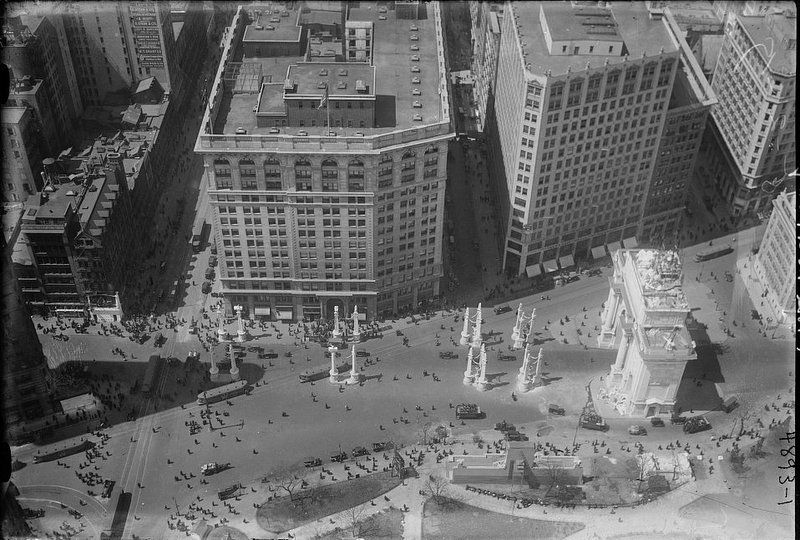
Photo from Library of Congress
Today, the book Broadway by Untapped Cities founder Michelle Young launched, published by Arcadia and featuring nearly 200 vintage photographs chronicling the history of the world-famous street, along with contemporary photographs by Untapped Cities contributors. We’ve asked Michelle to share with us 10 of the most surprising vintage photographs she came across in her research. Check them out here and buy the book on Amazon. Join in for a book talk and signing in New York City at WeWork with Michelle on May 26th, free tickets here.
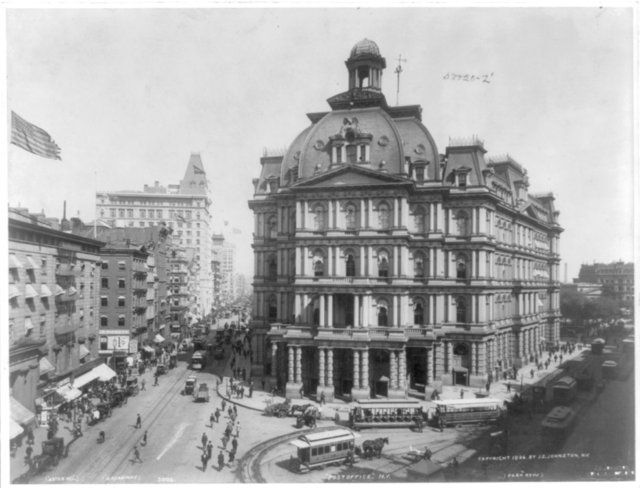
Image via Library of Congress featured in Broadway
The French Second Empire-style post office in City Hall Park was almost universally hated and known as “Mullett’s Monstrosity,” after the architect. It was also disliked for taking up precious open space in an already small park. In 1869 when it was constructed, it was the largest post office in the world. It was proposed for demolition in the 1920s but survived until 1939.
Order the book Broadway on Amazon.

Ceiling decoration, 1966. Image via The Library of Congress
The original Metropolitan Opera House opened in 1883 on 39th Street and Broadway, closer to the city’s emerging mansion district. Its arrival spurred the development of the theater district that centered around Long Acre Square. The opera house was designed by architect J. Cleaveland Cady. The interior of the Metropolitan Opera House was redesigned by Carrère and Hastings after a fire in 1892. The gilded auditorium had a proscenium arch inscribed with the names of six classical composers and elaborate, carved ceiling details.
When the Metropolitan Opera decided to relocate to Lincoln Center in the 1960s, the future of the existing building was called into question. Ironically, the Metropolitan Opera Association supported its demolition, fearing competition if another opera company took over. Due to questions over the integrity of the architecture, the building was not landmarked. It was demolished in 1967 and replaced with an office skyscraper.
Order the book Broadway on Amazon.

Image via Library of Congress featured in Broadway
Historically, Union Square has been the site of many meetings, demonstrations and speeches, and physical structures like this pavilion and stand behind it were built to accommodate protestors, a far cry from the limitations on public spaces and privately owned public spaces in New York City today. Above is a socialist and labor union demonstration on International Labor Day (May Day) in 1914 at the Union Square pavilion, which no longer exists.
Order the book Broadway on Amazon.
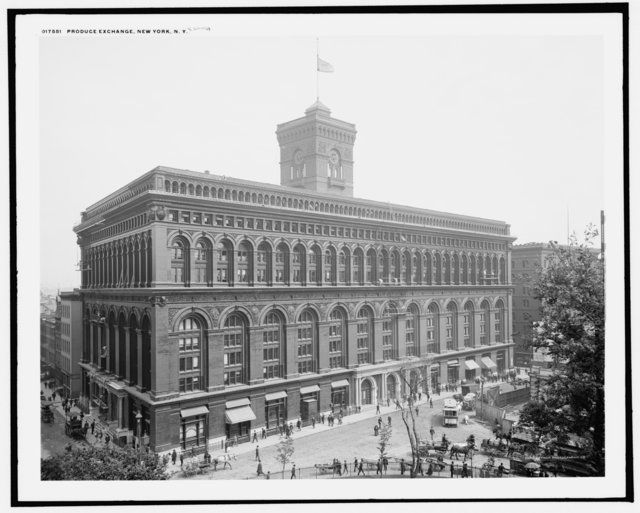
Image via Library of Congress. featured in Broadway.
In the 19th century, the New York Produce Exchange was located at 2 Broadway across from Bowling Green. George B. Post built this brick Romanesque revival building using cage construction, a foreshadowing of future skyscraper technique. Prices for global commodities like oil, wheat, and corn were set here. In 1900, $15 million dollars of business passed through the exchange each day. The building was demolished in 1957.
Order the book Broadway on Amazon.
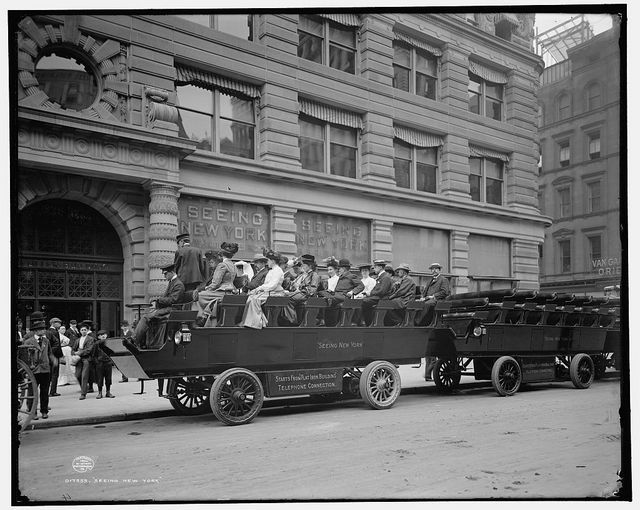
Image via Library of Congress featured in Broadway
The Flatiron Building was such a popular tourist destination that Seeing New York operated its open air New York City tours from the building every hour, all seven days of the week for $1. Seeing New York operated a four sightseeing tours: downtown to the Little Italy, Five Points, Chinatown and the Bowery, uptown to Central Park, Fifth Avenue, Riverside Drive, Chinatown by night and a yacht tour around Manhattan.
Order the book Broadway on Amazon.
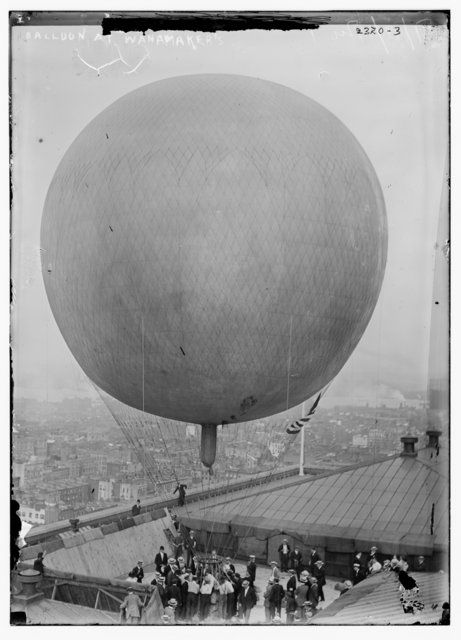
Image via Library of Congress featured in Broadway
In 1911, Wanamaker’s launched a hydrogen balloon off the roof of the Annex building aimed for the store’s flagship location in Philadelphia. Though it ended up going north instead, crash landing in Nyack, New York, the balloon stunt still gave the store the publicity it wanted from the spectacle.
Order the book Broadway on Amazon.
 Newspaper Row. Photo from Library of Congress featured in Broadway
Newspaper Row. Photo from Library of Congress featured in Broadway
Leave it to New York City to demolish numerous of its buildings which once held the record for World’s Tallest Building. One the left is one of the demolished buildings, the New York World Building, which was commissioned by Joseph Pulitzer on Park Row and was the first skyscraper to surpass the height of Trinity Church. Pulitzer had his office in its dome. The 1890 building was demolished in 1955 to make way for a larger entrance ramp to the Brooklyn Bridge.
Order the book Broadway on Amazon.
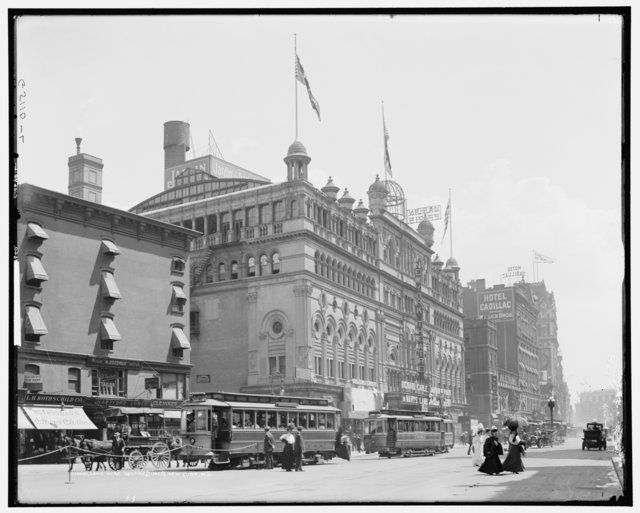
Image via Library of Congress, featured in Broadway
The New York Theatre Company building on Broadway between 44th and 45th Street was built by Oscar Hammerstein in 1894 as the Lyric Theatre. The large building included a roof garden, billiard room, concert hall, music hall and a theater. Demolished in 1935, it has also been known as the Olympia and the Criterion.
Order the book Broadway on Amazon.
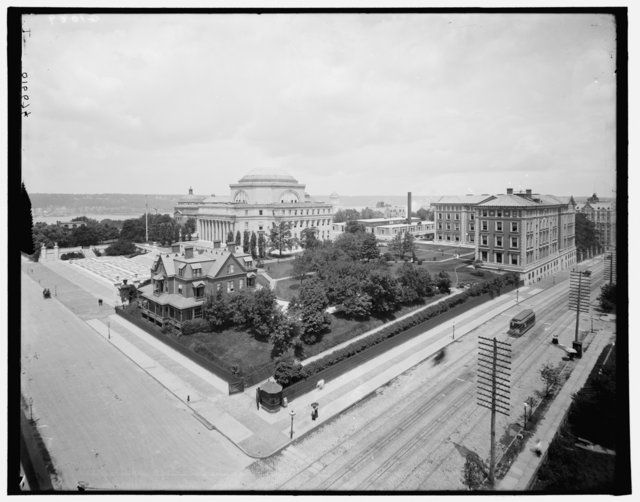
Photo from Library of Congress
Columbia University was built on the former Bloomingdale Asylum, a public hospital petitioned for by the doctors at King’s College. Of the original buildings from the Bloomingdale Asylum, only Buell Hall remains but old photographs while Columbia was under construction show wooden houses on the campus that were later demolished, like the one above.
Order the book Broadway on Amazon.

Image from Library of Congress
Three monumental arches were once built at Madison Square. The Dewey Arch was a temporary monument at Madison Square Park to commemorate Commodore George Dewey’s victory over the Spanish at Manila Bay in 1898. It was built by Charles R. Lamb using staff, the same material used in the temporary structures at the World’s Columbian Exposition in Chicago. Earlier in 1899, two additional arches were constructed to commemorate the centennial celebration of George Washington’s first inauguration, located on 23rd Street and 26th Street.
The Victory Arch (above) was another temporary, monumental arch of wood and plaster to commemorate New Yorkers who died in WWI. Designed by Thomas Hastings, it was modeled after the Arch of Constantine in Rome and installed at Madison Square in 1918 at a cost of $80,000. Plans to make it permanent fell through and it was eventually demolished.
Read on for an excerpt of the book, Broadway. Order the book Broadway on Amazon.
Subscribe to our newsletter